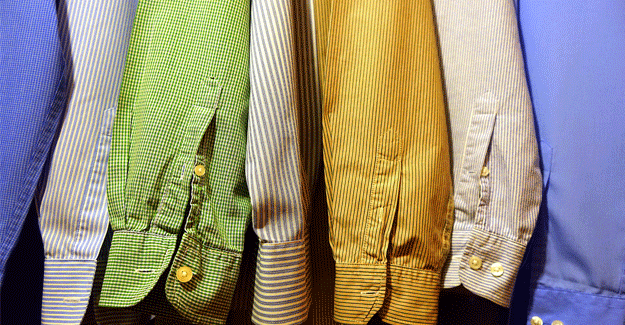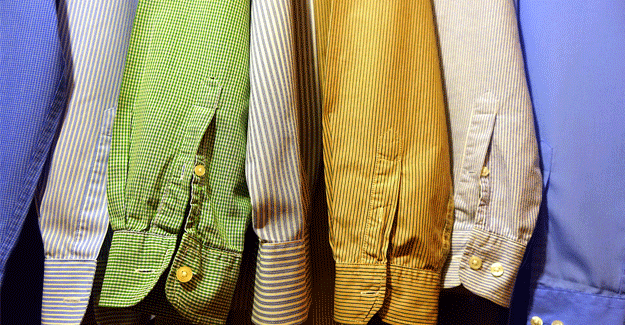
US Is Indeed Widening Its Apparel Sourcing Base
The latest US textile and apparel import statistics are indicative of a changing supply chain, and of US buyers noticeably diversifying their sourcing base.
US and European buyers have been following the China + 1 or China + many sourcing strategy for some years now. And in this part of the world, it was believed that the +1 or +many would be Asian countries - viz. Bangladesh, Vietnam, India, Sri Lanka.
The latest OTEXA statistics reveal that US imports from these countries remain the highest, but have not clocked the highest growth rates. Imports have surged from Turkey, Myanmar, Cambodia, AGOA countries for mass apparel. And imports have clocked impressive growth from the fashion capitals of the world - Italy, France, Spain.
Consumer spending on low end commodity apparel and footwear has been more or less stagnant for some time now, with shoppers preferring high value items. The current import figures point to this trend.
China still rules the roost
US imports of apparel from China during January-March 2018, at US$ 5802.021 million, were 0.87% higher than in the same period of 2017. In volume terms, Chinese exports to the US amounted to 2482.089 million SME, an increase of 3.74% during the period under review.
In 2017, China's apparel exports to the US fell 3.17% to US$ 27030.289 million, which was still 33.67% of total apparel imports of the US in terms of value, and 42% in volume.
In the first three months of 2018, China's share remains the highest, but is dwindling. In value, China's share in US apparel imports was 30.17%, and in volume, 38%.
Imports from China will fall further in the midst of tariff and trade wars. Will a 25% US tariff on Chinese apparel significantly bring down China's exports to this market? Once again, the answer is not in the near future.
A rough aggregation of China's per unit price of apparel for US buyers shows that it is still one of the most competitively priced destinations to source from, coupled with the fact that it has the capacities needed to service the huge US market, among others.
An overall 25% tariff by the US on imports of Chinese apparel will make the apparel costlier by well, 25%. But this will still keep China far more competitive than some of its rivals. Vietnam will remain pricier than China. As also Indonesia and India. Bangladesh will become the lowest cost destination for US to buy from. A direct boost to Bangladesh. All this is assuming that the Chinese government will offer no incentives or tax rebates to its industry to counter the US tariff.
Imports from other sourcing destinations in Asia
Vietnam is the second largest apparel supplier to USA. US imports of apparel from Vietnam during January-March 2018 were valued at US$ 2858.357 million, an increase of 3.32% compared to the same period in 2017. US imported 914.263 million SME apparel during the period, which was 1.73% higher than in the corresponding period of last year (CPLY).
In 2017, Vietnam's apparel exports to the US had clocked a 7% growth.
Bangladesh's non-compliance issues spoil the game
In the last two benchmarking reports by the United States Fashion Industry Association (USFIA), many buyers had hinted at reducing sourcing from Bangladesh, while others had pledged to work closely with the Bangladesh industry. The non-compliance issues faced by the country's garment factories, coupled with lower US consumer spending on apparel, has resulted in a drop in exports to this market.
The US imported garments worth US$ 1356.166 million from Bangladesh during January-March 2018, a drop of 0.92%. In volume terms, imports were at a slightly lower level of 511.892 SME million, a drop of 0.06%. In 2017, imports from Bangladesh were down by 4.46%.
The fourth largest supplier to the US market - Indonesia, has seen a more noticeable fall. US apparel imports from Indonesia fell 5.78% to US$ 1149.891 million. In 2017, imports was Indonesia were down 3%.
India's presence in the US market remains stable. During January-March 2018, US imports of apparel from India at US$ 1036.066 million, were marginally lower by 0.79%, compared to CPLY.
In 2017, India's apparel exports to the US registered an increase of 1.17%.
Even so, US buyers will become more aggressive in adopting the strategy of China + many. And Vietnam and Bangladesh will become more important suppliers to the US. Vietnam already enjoys a 13-14% share of total US apparel imports, and Bangladesh, 7-8%.
Emerging sourcing destinations for US apparel needs
Cambodia could emerge as an important apparel sourcing destination. At present, it offers the lowest prices. But does not have the capacities to match the demand of US buyers. Moreover, Cambodian factories have been in the news for non-compliance many times, and buyers may hesitate to increase sourcing from here.
US imports from Cambodia, during the period under review, went up 12.52% to US$ 587.715 million. In volume terms too, imports registered a similar increase of 12.75% to 262.845 million SME.
US imports from Myanmar are quite negligible, but growing at a fast pace. During January-March 2018, US apparel imports from Myanmar amounted to US$ 33.785 million, up 36.70% compared to CPLY.
In 2017, apparel imports worth US$ 132.517 million, were 80% higher than in 2016. Myanmar is working to strengthen its textile industry. Chinese investors could set up factories in Myanmar, as they have done in Vietnam.
As we know, for textile and apparel commodities, China is losing its competitiveness, and is setting up production facilities in other countries and regions. So, while direct sourcing from China may attract a 25% US tariff, a Chinese company will be able to work around this tariff if it relocates.
And maybe even enjoy preferential treatment in the US market. We are hinting at Chinese textile investors' aggressive move into African countries, most of them enjoy preferential trade access under AGOA.
US buyers have increased their sourcing from Turkey over the years. During January-March, US apparel imports from Turkey at US$ 147.996 million were 21.75% higher than in the CPLY. In 2017, the US imported apparel worth US$ 526.546 million from Turkey, which were 11.51% higher than in 2016.
A rough aggregation reveals that Turkey is more competitive than Vietnam and Bangladesh.
Egypt looks to be another emerging sourcing destination for US buyers. During January-Marcy 2018, imports from Egypt were up 15.78%, to US$ 203.355. In 2017, imports from Egypt at US$ 726.547 climbed 5.13% compared to 2016. Prices of Egyptian apparel are quite competitive.
Imports from Italy rose 20.52% during the first three months of 2018. Imports from France recorded a growth of 11.24%, to US$ 41.756 million. These are high value fashion apparel, revealing a preference for high value over commodity.
Apparel imports from AGOA countries are up
Apparel imports from AGOA countries are on the rise too, especially in 2018. In the first three months of the year, apparel imports from these African countries reached US$ 274.55 million, up by 17% compared to CPLY. Volumes grew 20% to 74.726 million SME.
Top exporting countries from AGOA include Kenya, Lesotho, Madagascar, Mauritania, Morocco, Ethiopia and Tanzania. While most of these countries registered double-digit export growth to the US this year, Ethiopia's apparel exports grew 101.58% during January-March 2018. US buyers imported apparel worth US$ 21.955 million from Ethiopia. Volume was up 123.43% to 10.480 million SME.
These import trends, the looming trade war between US and China are a wake-up call for America's traditional apparel suppliers to act quickly to make their supply chains efficient. And to diversify their markets to hedge risks.

Textile Excellence
If you wish to Subscribe to Textile Excellence Print Edition, kindly fill in the below form and we shall get back to you with details.








